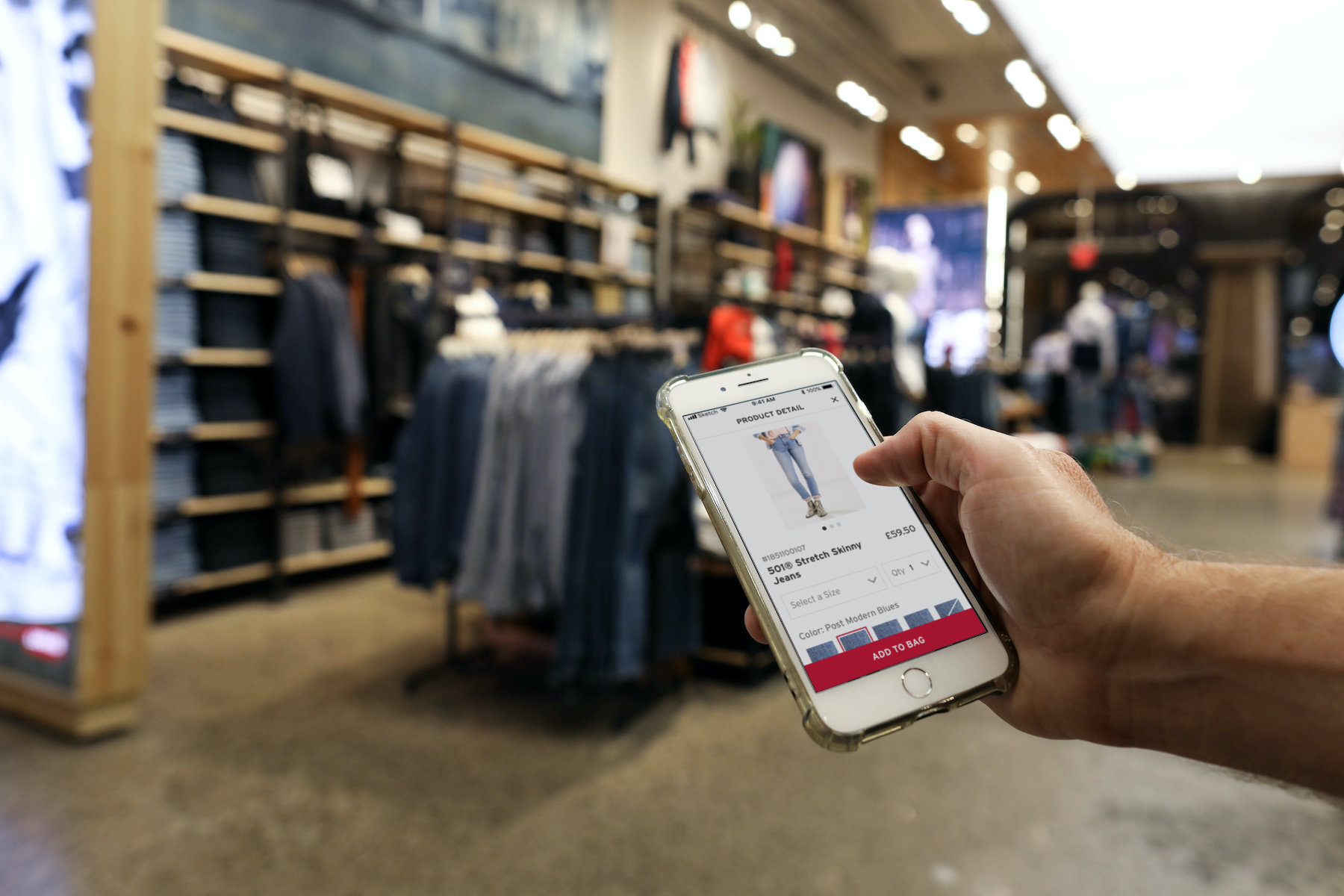Levi’s Associate Ordering System (AOS)
Problem
In our European (“EU”) market, most retail stores are smaller in size and hold less product than our flagship stores. When consumers wanted an item in a different size or color, they would often find the store did not have it in stock. Store employees (we call them, “stylists”) would either have to direct consumers to another store or to levi.com to make their purchase. However, stores would lose out on this sale and oftentimes, consumers left the store dissatisfied.
Goal
Create an Associate Ordering System (“AOS”) application that will allow store stylists to order items for consumers for home delivery in order to save these sales and ensure consumer leaves the store happy and helped. We had 9 months, from discovery to handoff.
Process
Discovery interviews, storyboarding, flow charts, information architecture, wireframing, prototyping, usability testing, and iterating
Role
Lead UX Designer with team of another UX Designer, 6 Engineers, Product Manager, Project Manager, and UX Researcher
Outcome
The mobile point-of-sale application (built for iPod touch) launched in 2018 reaches over 300 stores all across Europe. Here’s a prototype of the final product:
Process
Research & Discovery
Although this was a new application for Levi’s EU market, our US counterpart was already using an out-of-the-box AOS application in-stores. Because of logistical and administrative reasons, we were not able to get face time with EU store stylists. So instead, we began by interviewing and user testing US store stylists as a proxy. They walked us through their current workflow and told us their thoughts.
We learned:
Most of the time, AOS is used for consumers that need a certain style in a size not carried in the store
Sometimes, when the desired size and style isn’t available, stylists will try to help consumers find something similar (e.g. the same style in a different color)
Sometimes, consumers come in only having a vague idea of what they’re looking for, but can’t find it in person. In these cases, stylists will use the store iPad, go to levi.com, shop alongside consumers, and order the item via AOS
The workflow was actually quite simple, despite all the actions stylists had to make: find the item, check inventory, and process the transaction
During our interviews, store stylists walked us through LSA’s version of the AOS application.
The long, complicated flow can be broken down into three key actions: finding the item, checking inventory, and processing the transaction.
For the EU flow, we kept the same key actions, but simplified as much as we could to streamline the application.
Wireframing & Testing
Starting designs in lofi allowed us to ideate quickly on how this application should be built. What were the actions needed on each page? What should the navigation structure be? When would stylists handle the device? When would consumers?
Lofi wireframes were created in consideration of findings from user interviews.
Alongside a UX Researcher, we conducted two rounds of user testing: the first with US store stylists, and the second with EU store stylists. After each round, we synthesized the results, narrowing in on designs and flows that worked well for users.
Our UX Researcher helped organize and conduct our testing, as well as helped synthesize our results.
Synthesizing user feedback with post-its helped pull out common themes that eventually guided final design decisions.
Our team had to be flexible with balancing input from users and business partners simultaneously as we refined our designs.
Multiple rounds of testing helped refine our flows and validated our design decisions.
After its launch, a user survey was taken to understand how well the app was doing. The feedback we received validated the design decisions we made along the way:
“It’s one of the best devices we’ve gotten as a company, and it’s easy for someone to pick up even if the employee is new.”
Reflection
AOS was the first experience directly interacting with engineers on a day-to-day basis, as part of an agile scrum team. Early on, I saw the importance of onboarding the whole team to our designs, rather than having them only see the micro lens described in JIRA tickets. Painting a cohesive picture of how the whole app would behave and function (even in lofi) helped communicate the interactions we were looking for. Another win on this project was convincing the Product Manager and Project Manager to add visual QA to the process. This ensured that we maintained the integrity of the visual design, which lended to a more cohesive end product.





